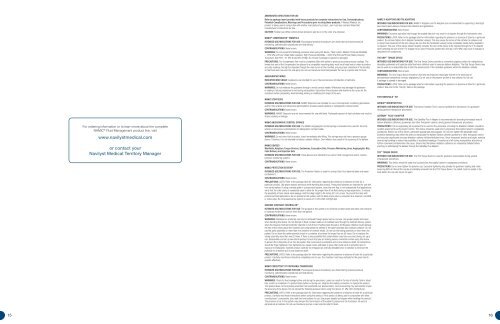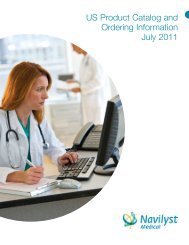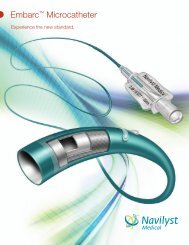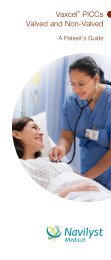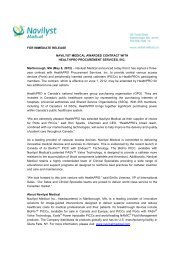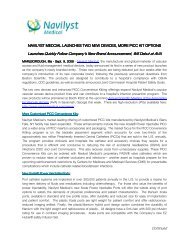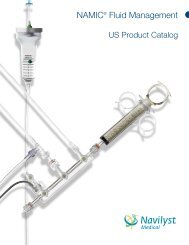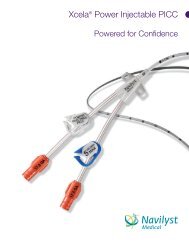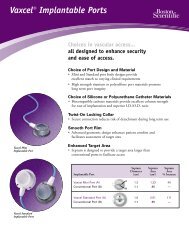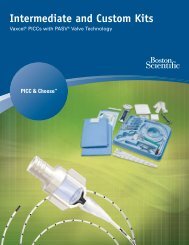NAMIC ® Fluid Management Systems for Cardiac - Navilyst medical
NAMIC ® Fluid Management Systems for Cardiac - Navilyst medical
NAMIC ® Fluid Management Systems for Cardiac - Navilyst medical
Create successful ePaper yourself
Turn your PDF publications into a flip-book with our unique Google optimized e-Paper software.
<strong>NAMIC</strong> ® Protection Station ®Proven Blood Contact Protection.Best Practice Solution.Easy to Use.Choose the Closed <strong>Fluid</strong> System That’s Right <strong>for</strong> YouProtection Station ®Off the ManifoldBifurcated Protection StationOn the ManifoldClosed <strong>Fluid</strong> <strong>Systems</strong>Angio-Sac ® Collection SystemOn a 4V ManifoldTransmission of bloodborne pathogens is always a concern inthe lab. <strong>Navilyst</strong> Medical provides Closed <strong>Fluid</strong> <strong>Systems</strong> to helpyour lab comply with OSHA guidelines and minimize exposureto bloodborne pathogens.Our OSHA-compliant Solutions:• Simplify set-up and clean-up• Reduce procedure time• Minimize contact with contaminated fluidsHow the <strong>NAMIC</strong> ® ProtectionStation WorksKey Features• Dual back check valve allows access to saline and waste• Available <strong>for</strong> pressurized and non-pressurized saline sources• Conveniently attaches to manifold with adaptorSalineBagAspirationSalineBagInjectionBest Practice SolutionThe Occupational Safety and HealthAdministration (OSHA) estimates that 8,700healthcare workers contract Hepatitis BVirus (HBV) on the job each year, with 200deaths annually resulting from occupationalexposure to this virus. 1OSHA guidelines indicate: “All proceduresinvolving blood or other potentially infectiousmaterials shall be per<strong>for</strong>med in such amanner as to minimize splashing, spraying,spattering and generation of droplets ofthese substances.” 2In studies from England, splashing orspraying of blood occurred in 6.7% to8.7% of angiographic procedures. Risk ofblood contacts was greater <strong>for</strong> procedureslasting more than 30 minutes, as well as<strong>for</strong> procedures requiring more than twocatheter exchanges and <strong>for</strong> thrombolysisand angioplasty. 1Clearly, building protection into your systemis the best way to prevent exposure.Angio-SacCollectionSystemAs syringe is drawnback, 1-way valveleading to salineopens, filling syringe,while the valve tothe Angio-SacWaste Bag closesAngio-SacCollectionSystem1-way valve leadinginto Angio-Sac WasteBag opens, allowingthe passage of bodilyfluids while the valveto the saline closes1. Hansen, M. Bloodborne Pathogens and Procedure Safety in Interventional Radiology. Seminars in Ultrasound, CT and MRI 1998;19(2):209-214.2. U.S. Department of Labor. OSHA regulations (standards - 29 CFR) bloodborne pathogens. 1910.1030.7 8


